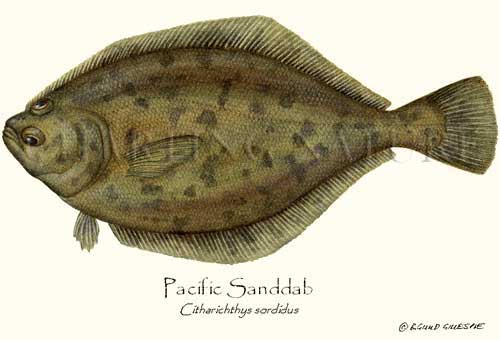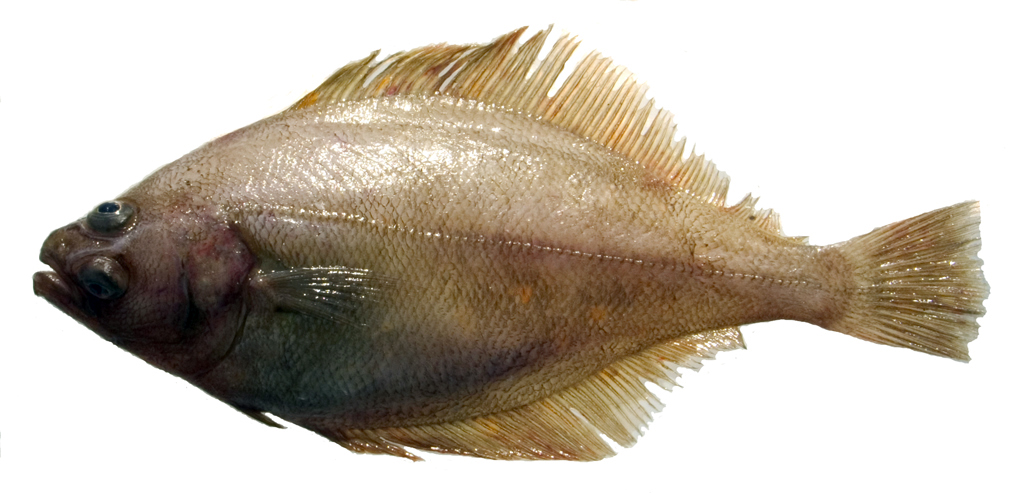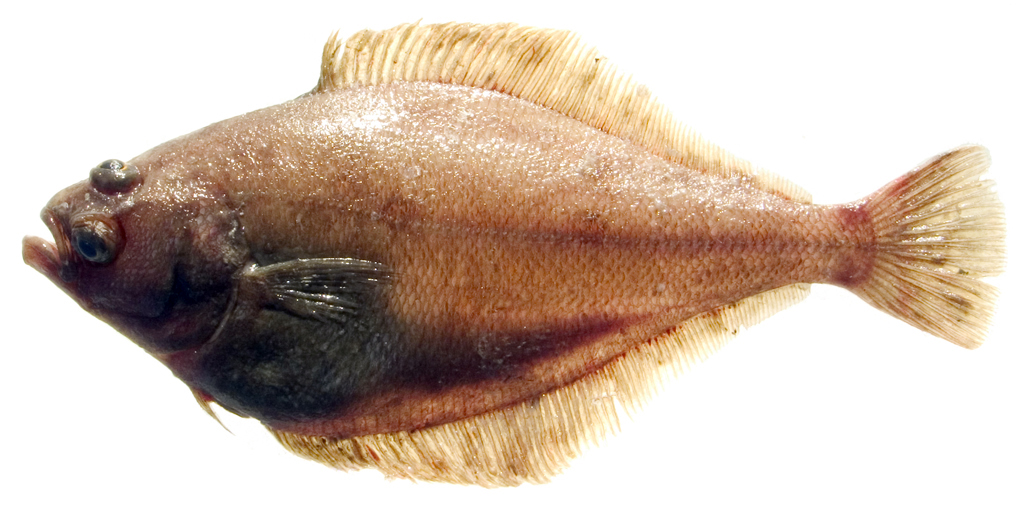
Citharichthys sordidus
FAMILY
Paralichthyidae
TAXONOMY
Psettichthys sordidus Girard, 1854, San Francisco, California.
OTHER COMMON NAMES
English: Mottled sanddab, soft flounder, melgrim; Spanish:
Lenguado arenero del Pacifico, lenguado.
PHYSICAL CHARACTERISTICS
Medium-sized, sinistral flatfishes with an elongate to oval
body; large head with large terminal mouth; and slightly
rounded, almost square caudal fin. Eyes are large, with the
lower eye in advance of the upper eye and separated from it by
a sharp, naked bony ridge. Pectoral fins are large and pointed.
Lateral line is nearly straight. Scales are ctenoid on the ocular
side of the body and cycloid on the blind side. Ocular side is a
dull light brown, mottled with brown or black and sometimes
yellow to orange speckles or white spots. Blind side is off-white
to tan. Maximum lengths of about 16.1 in (41 cm) and weights
up to about 2 lb (0.9 kg), but most are much smaller, only
4.9–5.6 oz (140–160 g). They live to be at least eight years
of age.
DISTRIBUTION
Marine waters in the northern Pacific Ocean from the Sea of
Japan to the Bering Sea and the Aleutian Islands south to Cape
San Lucas, Baja California.
HABITAT
Adults inhabit gravel, sand, or mud-sand bottoms at 16.4–1,801
ft (5–549 m) but are most abundant at 164–492 ft (50–150 m);
they rarely occur below 984 ft (300 m). Juveniles occur at shallower
depths than those occupied by adults and sometimes
move into tide pools.
BEHAVIOR
Diurnally active. Spend much of their time on the bottom, although
occasionally they are captured at night up in the water
column.
FEEDING ECOLOGY AND DIET
Opportunistic, visually oriented predators that feed principally
on pelagic crustaceans, such as euphausiids, shrimps, crab larvae,
calanoid copepods and amphipods, and occasionally small
fishes and benthic prey, among them, annelid worms and crustaceans.
Pacific sanddabs are consumed by a variety of larger
predators, including blue sharks and other sharks, stingrays,
and halibut, and also have appeared in the diets of Guadalupe
fur seals.
REPRODUCTIVE BIOLOGY
Begin maturing between ages two and three years. Spawning
takes place on or near the bottom from July to September off
California. Eggs are released independently, are buoyant, and
are fertilized outside the female. Females may spawn more
than once during the same spawning season.
CONSERVATION STATUS
Not threatened.
SIGNIFICANCE TO HUMANS
Excellent food fish. Regarded as a delicacy in California but
with less appeal elsewhere.
Photo Gallery of - Pacific sanddab





 Animalia Life
Animalia Life